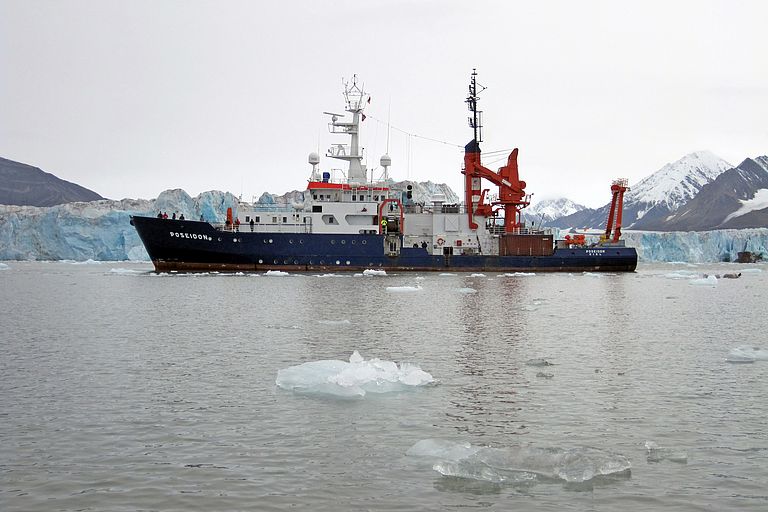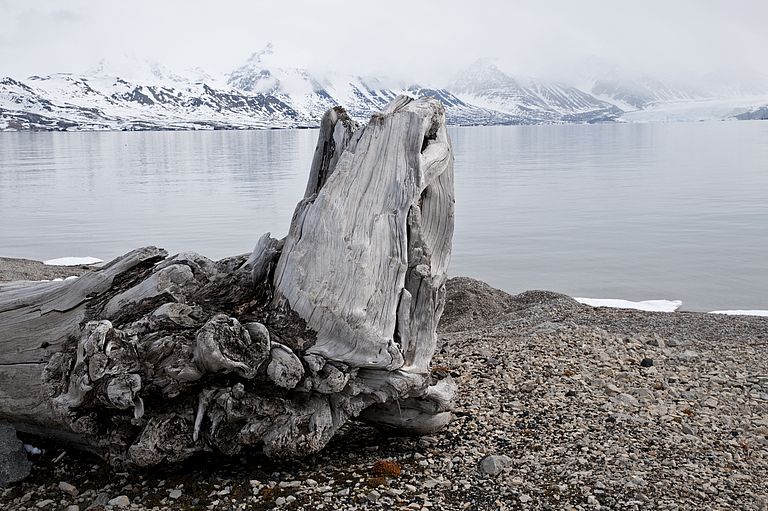Does The Arctic Heat Up Climate Change?
International experts on methane release convene at GEOMAR
Melting glaciers in Greenland and thawing sea ice in the Arctic Ocean – there are already a number of noticeable impacts of climate change in the Arctic. But if global temperatures continue to change, these high northern latitudes of the planet could become a driver of global warming as well. The seabed of the Arctic shelf seas and the terrestrial permafrost contain huge quantities of methane. Thawing permafrost has already put methane into the atmosphere where it is 20 times more effective as a greenhouse gas than carbon dioxide. But how much methane is released and how rapidly will the total release continue increase in the future? "The Arctic includes such vast land and water areas that previous measurements represent nothing more than random samples," explains Professor Jens Greinert from GEOMAR Helmholtz Centre for Ocean Research Kiel, and he adds: "In addition, Russian, American and European researchers use somewhat different measuring techniques. Therefore, in order to get an overall picture, we need to ensure that the studies are comparable."
For four years, scientists from 23 nations have collaborated in the EU-funded project PERGAMON (PERmafrost and GAs permafrost and hydrate related methane release in the Arctic and impact on climate change: European cooperation for long-term MONitoring). This includes the collection of current research results from diverse disciplines on methane releases in the Arctic, standardization of techniques for monitoring, and the development of international monitoring projects. The final symposium of this project with about 100 international experts takes place at GEOMAR Kiel from 5 to 7 November 2013.
The researchers will present results of research in the atmosphere, on land, in the ocean and on the ice. For Prof. Tina Treude, marine microbiologist at GEOMAR, this interdisciplinary collaboration is one of the great success stories which PERGAMON represents: "Until now, many scientists have dealt with methane and methane release in the Arctic, but mostly limited to their respective fields. Thanks to the contacts we were able to establish in PERGAMON, we get a more complete understanding of the processes in the Arctic."
For Dr. Ko van Huissteden of the Free University of Amsterdam the international cooperation in the PERGAMON network was particularly important. I’d like to emphasize the contacts with colleagues in Russia that we were able to re-establish. Finally, the tremendous permafrost areas of Siberia are the largest source of methane emissions in the Arctic," said the specialist for terrestrial gas flows. His colleague Dr. Torsten Sachs, a specialist in atmospheric methane measurements at the Helmholtz Centre Potsdam GFZ German Research Centre for Geosciences, adds: "For me, PERGAMON was especially good and therefore important because working as an exclusively terrestrial scientist previously, I was able to meet and collaborate with the marine methane community."
Another focus of the PERGAMON project was promoting young scientists: "Exchange programs, international workshops and summer schools for PhD students and post-docs have benefitted the networking in this area. In addition, the young colleagues were able to learn uniform measurement and analysis methods that help to unify research in the future," says Dr. Ingeborg Bussmann from the Alfred Wegener Institute Helmholtz Centre for Polar and Marine Research.
Although the PERGAMON project officially ends with the symposium in Kiel, the research will continue. "Thanks to the network that we have created over the past four years, several follow-up projects have already been developed which, in the coming years, will probably bring exciting results on Arctic methane," says Professor Greinert. Time is of the essence because the changes in the environment do not wait
Images in higher resolution:
The Kiel research vessel POSEIDON in front of a glacier in Svalbard in 2011. In the PERGAMON project, marine researchers and methane specialists carried out joint expeditions to obtain a more universal view of methane releases in the Arctic. Photo: J. Greinert GEOMAR
Contact:
Jan Steffen (GEOMAR,Communication & Media), Phone +49 431 600-2811, jsteffen(at)geomar.de




